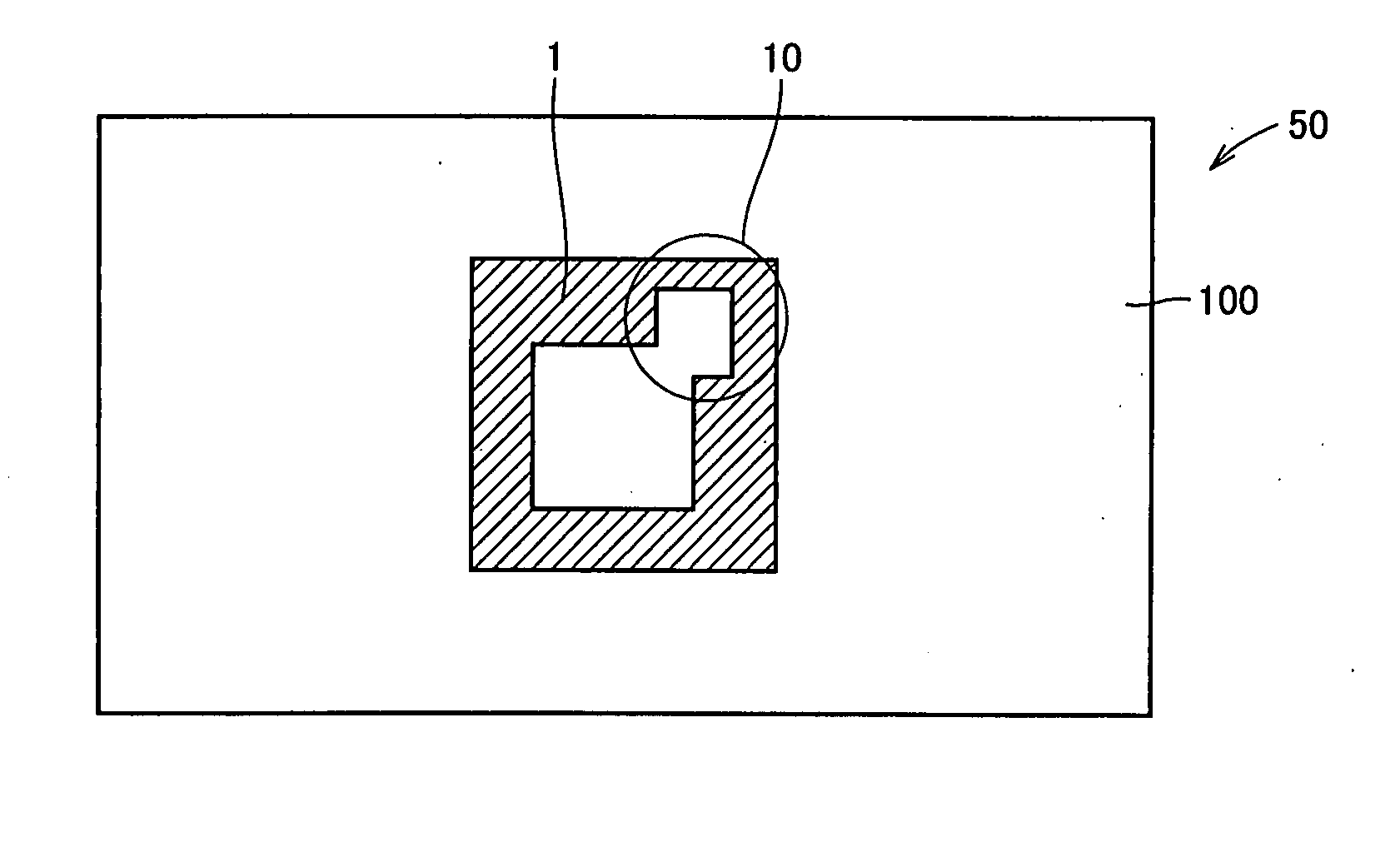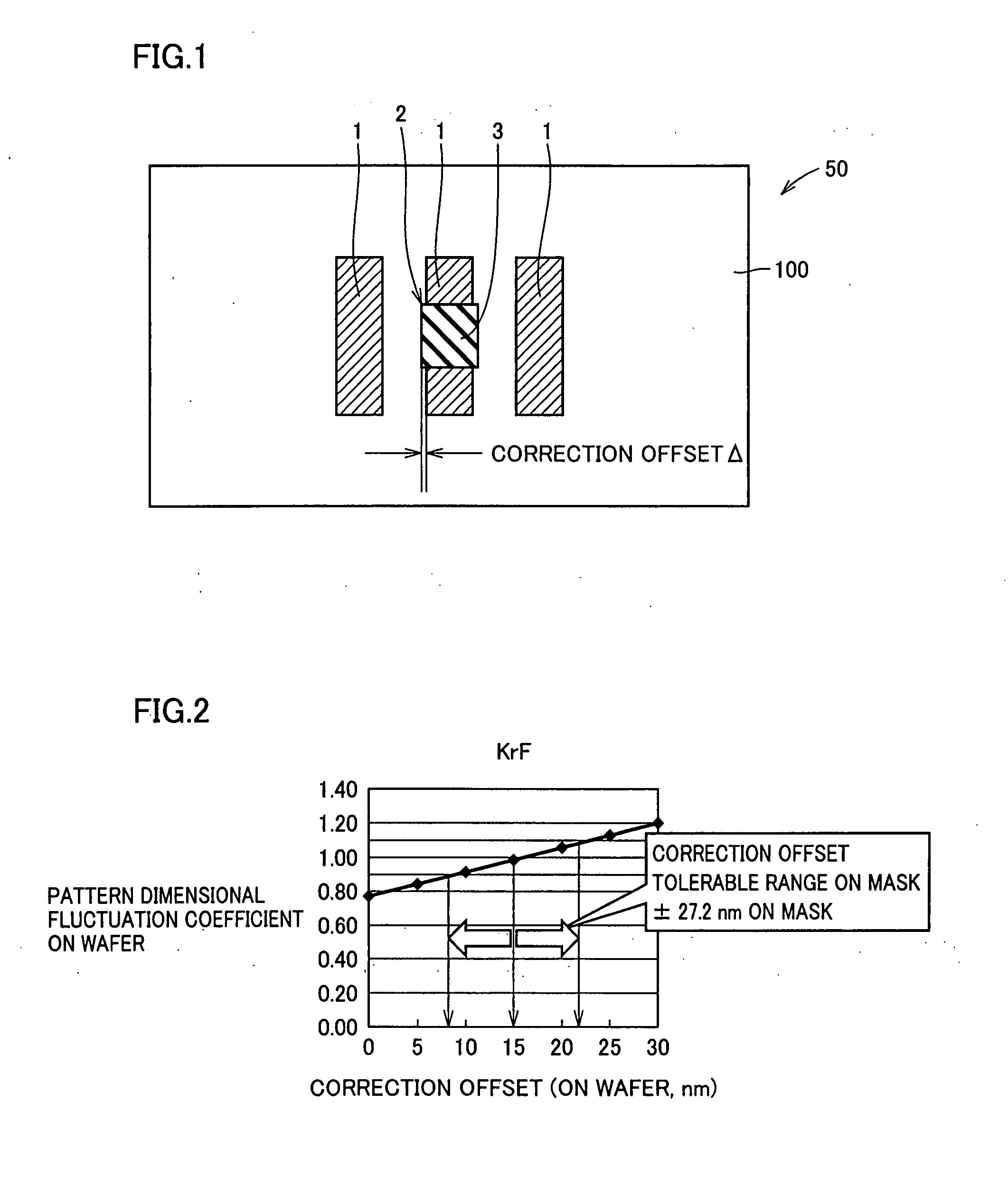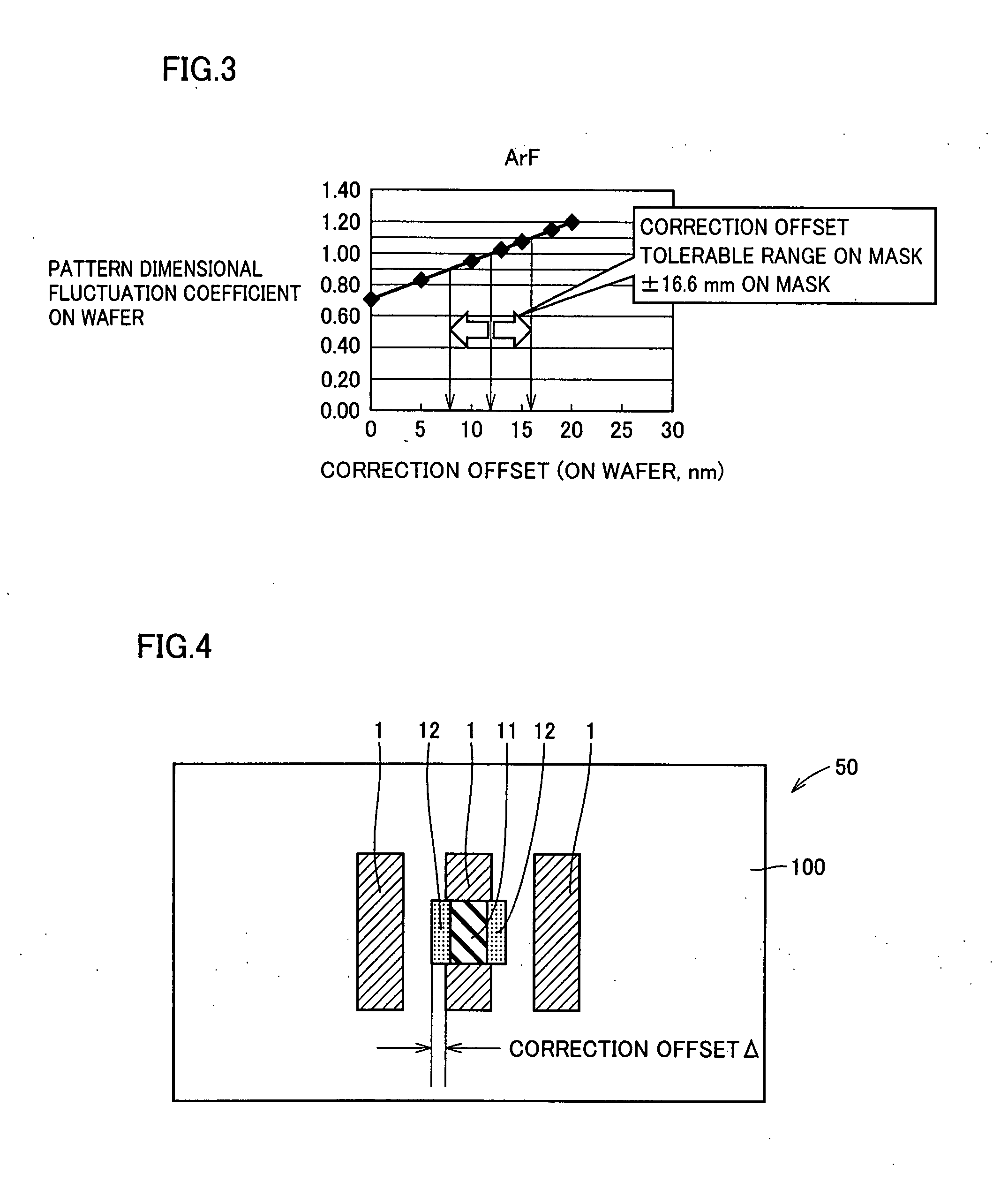Photomask, and method and apparatus for producing the same
a technology of photomasks and masks, applied in the field of photomasks, can solve the problems of serious effect of arrangement errors of shading portions on the arrangement, shape or dimension of patterns transferred onto semiconductor substrates, and achieve the effect of large working accuracy tolerance margins
- Summary
- Abstract
- Description
- Claims
- Application Information
AI Technical Summary
Benefits of technology
Problems solved by technology
Method used
Image
Examples
first embodiment
[0069] In order to compare the method for correcting a photomask according to the present embodiment with a method for correcting a photomask according to a comparative embodiment, the method for correcting a photomask according to the comparative embodiment will be specifically described. An HT mask as the photomask used in this correcting method according to the comparative embodiment will be described referring to FIG. 1. In this photomask, a wire-breaking defect, which is one example of clear defects, generated in a wiring pattern on the HT mask is corrected, as illustrated in FIG. 1.
[0070] The HT mask illustrated in FIG. 1 is used at an exposure wavelength of 284 nm. This HT mask is composed of wiring patterns 1 (semitransparent film) having a width of 0.52 μm and space patterns formed between wiring patterns 1 in such a manner that the ratio between their widths is 1 / 1. In the method for correcting a defect according to the comparative embodiment, the portion of the defect is...
second embodiment
[0097] The following will describe a method for correcting a hole pattern of a photomask according to a second embodiment. In the photomask correcting method of the present embodiment, the same manner as in the photomask correcting method of the first embodiment is used except that a pattern to be corrected is different.
[0098]FIGS. 20 and 21 illustrate a state that in an HT mask used at an exposure wavelength of 248 nm, a clear defect (edge missing defect having a dimension of about 0.3 μm) is formed at an edge of a hole pattern about 0.6 μm square.
[0099] In the method of using a carbon film to correct a clear defect according to the comparative embodiment, in order to make the tolerable range of the dimensional fluctuation of the pattern, on a wafer, obtained after a clear defect corrected portion is transferred, into the range of ±10% of a target dimension, it is necessary that the tolerable location of carbon film 3 formed on the photomask is within the range of ±68 nm (span: 1...
third embodiment
[0103] The following will describe the photomask correcting method of the first or second embodiment in more detail.
[0104]FIG. 25 shows results measured in the case that Ga ions are radiated onto the surface of transparent substrate 100 made of quartz as a mask material by means of an FIB radiating apparatus wherein the accelerating voltage thereof is 30 KeV, and shows change in the light transmissivity of a portion onto which Ga ions are radiated when the total dose of the Ga ions is changed. As the radiated ions, ions of Au, Si or Be may be used instead of the Ga ions. In, Pb or Zn may be used instead of Ga if the problem of difficulty in the use thereof is overcome.
[0105] As illustrated in FIG. 25, the dose of radiated Ga ions is increased from 0 to 0.2 nC / μm2, the transmissivity of transparent substrate 100 is gradually lowered. For example, the transmissivity of the surface of transparent substrate 100 onto which Ga ions are radiated at a dose of 0.1 nC / μm2 is 22% when the wa...
PUM
| Property | Measurement | Unit |
|---|---|---|
| thickness | aaaaa | aaaaa |
| size | aaaaa | aaaaa |
| size | aaaaa | aaaaa |
Abstract
Description
Claims
Application Information
 Login to View More
Login to View More - R&D
- Intellectual Property
- Life Sciences
- Materials
- Tech Scout
- Unparalleled Data Quality
- Higher Quality Content
- 60% Fewer Hallucinations
Browse by: Latest US Patents, China's latest patents, Technical Efficacy Thesaurus, Application Domain, Technology Topic, Popular Technical Reports.
© 2025 PatSnap. All rights reserved.Legal|Privacy policy|Modern Slavery Act Transparency Statement|Sitemap|About US| Contact US: help@patsnap.com



